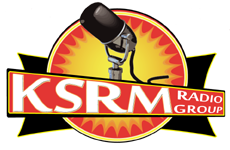The Alaska Board of Fisheries (BOF) met from February 23 through March 6, 2024, to discuss and deliberate on regulatory changes to Upper Cook Inlet (UCI) finfish fisheries.
Escapement goals
UCI has not changed any major king, sockeye, coho, or chum salmon sustainable or biological escapement goals.
The Kenai River sockeye salmon in-river goals were not modified. The Board of Fisheries established a new recovery goal for Kenai River late-run king salmon of 14,250–30,000 large
fish (>75 cm METF).
Kenai River Late-Run King Salmon Stock of Concern
The BOF listed Kenai River Late-Run King Salmon as a stock management concern. As such, a recovery plan has been adopted which outlines the specific measures that commercial, sport, and personal use fisheries will be managed until the delisting criteria for this stock are achieved.
Kenai River Late-run King Salmon Stock of Concern Management Plan For Commercial Fisheries
The goal of this management plan is to rebuild the Kenai River late-run king salmon stock to
levels that consistently achieve management targets established by the board and provide a sustainable
harvest opportunity.
The current recovery goal is 14,250–30,000 large king salmon. It must either be achieved or exceeded in three consecutive years or four to six consecutive years.
In either scenario, one of the years must have more than 18,000 large fish. If this were to occur, the department would consider delisting at the next UCI BOF meeting.
Drift Gillnet Fishery
Drift gillnet fishing is closed within two miles of the Kenai Peninsula Shoreline (MHW) until the stock is delisted for a stock of concern status.
Upper Subdistrict Set Gillnet Fishery
Set gillnet periods may be allowed when in-season projections exceed 14,250 large king salmon and will be limited to 8 hours. The number of periods provided changes by date.
- From June 20 – June 30 there may be two eight-hour periods (Kasilof Section only)
- From July 15 – July 27 there may be four eight-hour periods (All Sections)
- From July 28 – August 15 there may be two eight-hour periods (All Sections)
During all set gillnet periods, a permit holder may use up to one set gillnet that is not more than 35 fathoms in length and 29 meshes in depth.
- Commercial period start times will be based upon Seldovia District Tide Tables by section as follows: Ninilchik River Mouth to Kasilof River Mouth plus 3 hours from Seldovia District low tide (Stat Areas 244-21, 244-22), Kasilof River Mouth to Kenai
- River Mouth plus 4 hours from Seldovia District low tide (Stat Areas 244-31, 244-
32), Kenai River Mouth to Boulder Point plus 5 hours from Seldovia District low tide
(Stat Areas 244-41, 244-42).
All king salmon caught while set gillnet fishing must be retained, delivered to a shore-based or floating processor, and recorded on an ADF&G fish ticket. Retaining king salmon for personal use or home packing is not allowed.
Dip-Netting
The BOF approved adding dipnets to the Upper Subdistrict set gillnet fishery as a legal gear type. This gear may be allowed only when set gillnet fishing is closed and based on the abundance of sockeye salmon.
The department may allow up to three 12-hour commercial dip net periods per week from June 20 – July 31 when set gillnet fishing is not open.
- The area allowed for shore and vessel-based fishing is the current set of open gillnet areas, excluding the Kasilof River Special Harvest Area. Shore-based fishing may only occur at DNR shore lease sites.
- Retention of king and coho salmon is prohibited. King and coho salmon caught must be immediately released unless the fish is mortally wounded or dead and brought on board.
- Participation is limited to SO4H permit holders. Each permit holder may operate up to four dip nets at a time, each dipnet must be operated by the permit holder or a licensed crew member.
All standard CFEC reporting requirements apply in addition to the stock of concern
As a reminder, a legal dipnet is defined as a bag-shaped net supported on all sides by a rigid frame; the maximum straight-line distance between any two points on the net frame, as measured through the net opening, may not exceed five feet; the depth of the bag must be at least one-half of the greatest straight-line distance, as measured through the net opening; no portion of the bag may be constructed of webbing that exceeds a stretched measurement of 4.5 inches; the frame must be attached to a single rigid handle and be operated by hand.
Northern District Set Gillnet Fishery
The harvest limit in the king salmon-directed fishery was reduced from 12,500 fish to 4,500
fish. The Northern District Salmon Management Plan was modified to include language identifying Little Susitna king and coho salmon stocks as specific management considerations while prosecuting the set gillnet fishery.
Westside of the Central District Set Gillnet Fishery
Commercial salmon fishing was closed within 1-mile of the terminus of Silver Salmon Creek in the Silver Salmon statistical area (245-20). The terminus is located at the coordinate of 59° 58.85′ N. lat., 152° 38.66′ W. long.
Central District Drift Gillnet Fishery
The Central District Drift Gillnet Management Plan was modified to allow drift gillnet fishing in Area 3 during both regular periods from August 1 – August 15. Commercial salmon fishing was closed within 1 mile of the terminus of Silver Salmon Creek at 59° 58.85′ N. lat., 152° 38.66′ W. long. and Shelter Creek at 59° 53.10′ N. lat., 152° 48.24′ W. long.
Upper Cook Inlet Smelt Fishery
The guideline harvest level was reduced from 200 tons to 100 tons.






